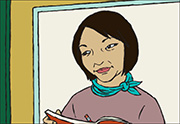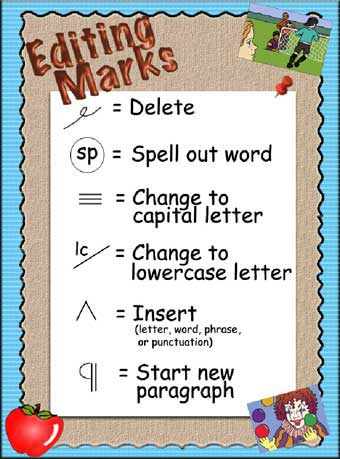What could Ms. Lin do to help her students learn to write persuasive essays?
Page 4: POW+TREE Writing Strategy
 As Ms. Lin reflects on the trouble her students are having with writing, she realizes that many of her students need help incorporating the four elements of the writing process (i.e., planning, organizing, writing, and editing and revising) into their essays. She concludes that they need a guide or strategy to follow as they write. For struggling writers who may have difficulty integrating the elements of the writing process, the POW+TREE writing strategy simplifies the first three elements: planning, organizing, and writing. Ms. Lin decides to introduce the POW+TREE writing strategy to her students.
As Ms. Lin reflects on the trouble her students are having with writing, she realizes that many of her students need help incorporating the four elements of the writing process (i.e., planning, organizing, writing, and editing and revising) into their essays. She concludes that they need a guide or strategy to follow as they write. For struggling writers who may have difficulty integrating the elements of the writing process, the POW+TREE writing strategy simplifies the first three elements: planning, organizing, and writing. Ms. Lin decides to introduce the POW+TREE writing strategy to her students.
A research-validated strategy, POW is a mnemonic device designed to help students structure any kind of writing. TREE is also a mnemonic device students can use to organize their ideas. As is demonstrated in the table below, students can combine the POW and TREE strategies to address the first three elements of the writing process in order to create persuasive essays.
Research-validated strategy
A strategy or practice that has been proven to work through experimental research studies or large-scale research field studies.
| Strategy | Activity | |
|
|
Formulate an opinion and state that opinion clearly. |
|
|
rganize and generate notes and ideas for each part of the TREE. |
Organize notes by completing a graphic organizer: |
|
 |
Topic Sentence | Formulate a topic sentence expressing an opinion. |
| Reason | Give at least three reasons to support the topic sentence. | |
| Explanation | Explain your reasons. | |
| Ending | Formulate a statement to summarize the topic sentence. | |
|
rite and say more. |
Write a complete paragraph. Follow the plan developed using the TREE strategy. |
|
After completing the POW+TREE strategy, students will still need to address the fourth element of the writing process: editing and revising. These skills should be taught as part of any comprehensive writing program. The bulletin board below displays the editing marks that Ms. Lin has taught her students. She uses these marks when providing editing and revising feedback to her students, and she requires her students to use them during the peer-editing process.

(Really Good Stuff [Online], 2007)


